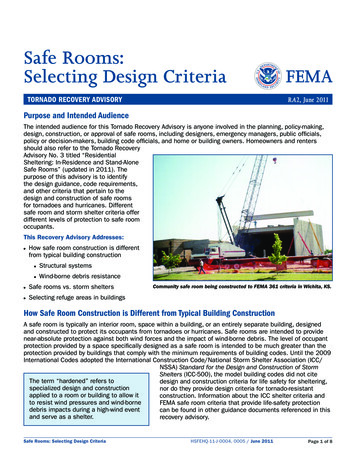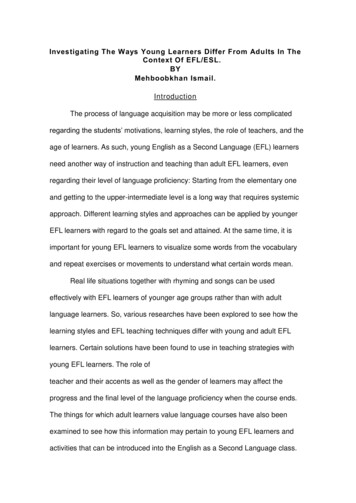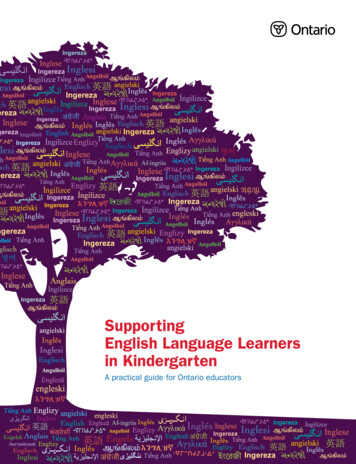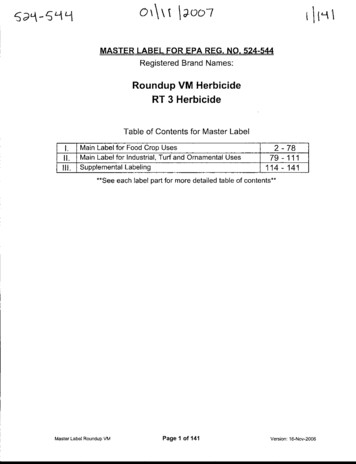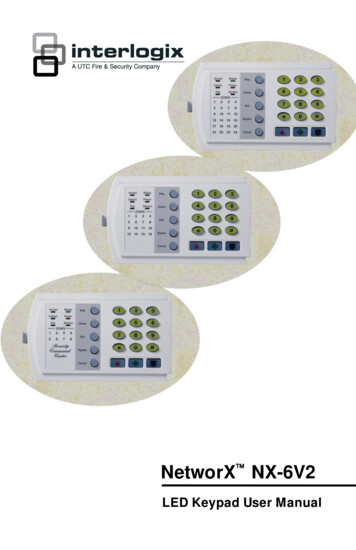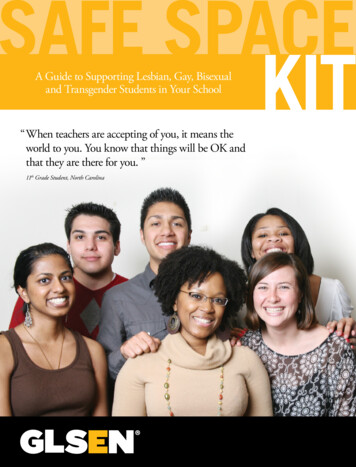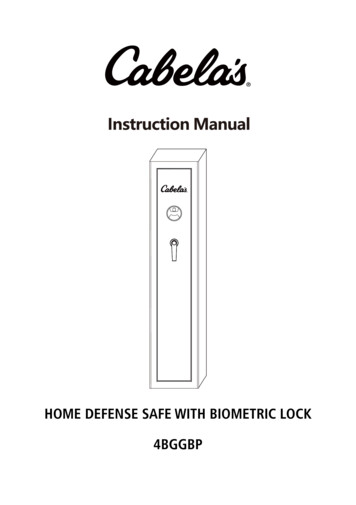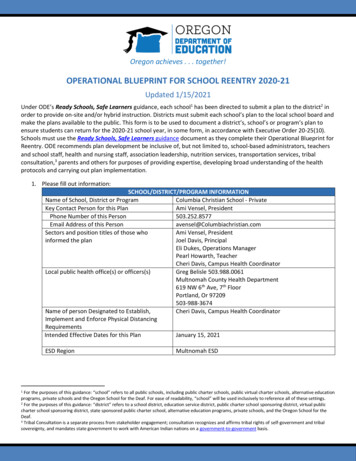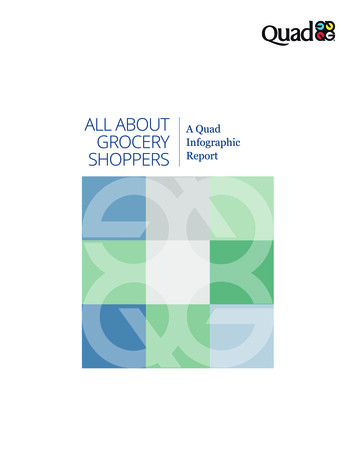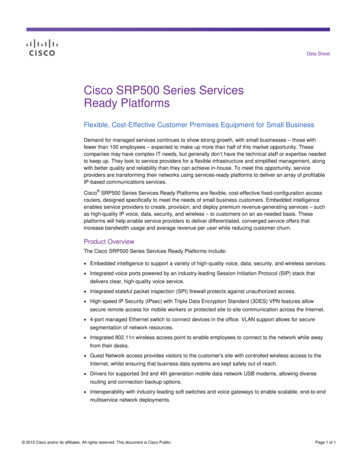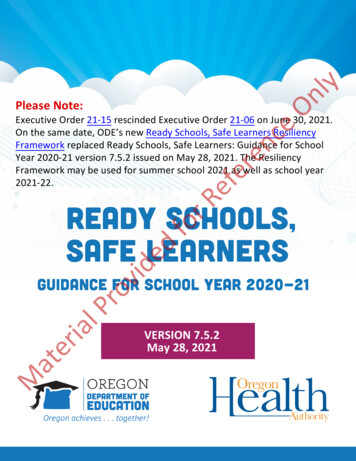
Transcription
OnlyPlease Note:rReferenceExecutive Order 21-15 rescinded Executive Order 21-06 on June 30, 2021.On the same date, ODE’s new Ready Schools, Safe Learners ResiliencyFramework replaced Ready Schools, Safe Learners: Guidance for SchoolYear 2020-21 version 7.5.2 issued on May 28, 2021. The ResiliencyFramework may be used for summer school 2021 as well as school year2021-22.videdfoREADY SCHOOLS,SAFE LEARNERSMaterialProGUIDANCE FOR SCHOOL YEAR 2020-21VERSION 7.5.2May 28, 2021
OnlyRelease NotesSummary of changes to recent versions of Ready Schools, Safe LearnersencePlease Note: As of June 30, 2021, this guidance is replaced by:Ready Schools, Safe Learners Resiliency Framework for the 2021-22 School YeareferVersion 7.5.2 includes the newest changes in green italics. The release notes are updated to showthe changes in this iteration. The use of italics and a different color is for meeting accessibilityrequirements and does not signal any specific emphasis or importance.Summary of Change or AdditionOverviewAdditional clarity on authority, applicability and enforcement of guidance.0rRSectionClarified recommendations for changes in learning model based on changes in metrics.Updated definition of outside space to align with OHA’s definition.1h, 2g, 2hUpdated to align with OHA’s updated guidance on face coverings.fo1c, 2jClarified that section does not apply to summer programs.5fClarified physical distancing for indoor activities. Physical Education and Librariesguidance updated.vided2aroNew COVID-19 variants and prevention in schoolsMaterialPIn the new guidance released by the CDC on March 19, 2021, they named that multiple SARS-CoV-2variants are circulating globally. These include several variants that have been detected in the UnitedStates. Some of these variants seem to spread more easily and quickly than other variants, whichcould lead to more cases of COVID-19. Rigorous implementation of prevention strategies is essentialto control the spread of variants of SARS-CoV-2.OHA, like the CDC, works in collaboration with other public health agencies to monitor the situationclosely assessing emerging variants quickly to understand their potential impacts and how tominimize their spread. As more information becomes available, prevention strategies and schoolguidance may need to be adjusted to new evidence on risk of transmission and effectiveness ofprevention in variants that are circulating in the community.Version7.5.2Checkboxes ( ) indicate requirements; arrows ( ) indicate recommendations.Page1
Table of ContentsREADY SCHOOLS, SAFE LEARNERSence1a. Communicable DiseaseManagement Plan forCOVID-191b. High-Risk Populations1c. Physical Distancing1d. Cohorting1e. Public HealthCommunication andTraining1f. Entry and Screening1g. Visitors/Volunteers1h. Face Coverings, Face Shields,and Clear Plastic Barriers1i. Isolation and QuarantineforR1. Public HealthProtocols0a. Returning to In-PersonInstruction0b. Metrics for Returning to InPerson Instruction Throughthe On-site or Hybrid Modelefer0. Returning to InPerson InstructionOnlyOverview Operational Blueprint for Reentryvided2a. Enrollment2b. Attendance2c. Technology2d. School SpecificFunctions/Facility Features2e. Arrival and Dismissal2f. Classrooms/RepurposedLearning Spaces2g. Playgrounds, Fields, Recess,Breaks, and Restrooms2h. Meal Service/Nutrition2i. TransportationMaterialPro2. Facilities and SchoolOperations3. Response toOutbreak4. EquityVersion7.5.22j. Cleaning, Disinfection, andVentilation2k. Health Services2l. Boarding Schools andResidential Programs Only2m. School EmergencyProcedures and Drills2n. Supporting Students who areDysregulated, Escalated,and/or Exhibiting SelfRegulatory Challenges2o. Protective PhysicalIntervention3a. Prevention and Planning3b. Response3c. Recovery and Reentry4a. Principles in Action4b. Decision Making that Centers EquityCheckboxes ( ) indicate requirements; arrows ( ) indicate recommendations.Page2
Onlyence5. Instruction5a. Instructional Time5b. Instructional Models5c. Learning Day, Instructional Schedule, and Academic Calendar5d. Instructional Considerations5e. Safeguarding Student Opportunity Clause5f. Instructional and Extra-Curricular Activities Requiring AdditionalConsiderations5g. Graduation 2020-21 and Post-Secondary Planning6a. Partnership in Planning6b. Communication6c. Before and After School Programs7. Mental, Social, andEmotional Health7a. Planning7b. Resources and StrategiesrR8a. Supports8b. Public Health Training8c. Professional Learningfo8. Staffing andPersonnelefer6. Family, rviewMaterAuthority and Effective DatesThe Oregon Department of Education (ODE), in coordination with the Oregon Health Authority (OHA), isupdating the Ready Schools, Safe Learners guidance for the 2020-21 School Year in accordance withGovernor Brown’s Executive Order 21-06 and Governor Brown’s March 5, 2021 decision to “return to thelearning environment we know serves [students] best: in-person instruction.” The Ready Schools, SafeLearners guidance became effective on July 1, 2020 and will remain in effect until it is rescinded. Thisguidance updates and replaces prior guidance.Version7.5.2Checkboxes ( ) indicate requirements; arrows ( ) indicate recommendations.Page3
Authority:Executive Order 21-06 on March 12, 2021enceOnlyApplicability: Except where it requires compliance and is labeled as “Required” and often indicated witha checkbox ( ), the Ready Schools, Safe Learners guidance is advisory and intended to provide schooldistricts with information and best practices in delivering education services during the COVID-19pandemic.Enforcement: This guidance contains both requirements and recommendations. To the extent thisguidance requires compliance with certain provisions, it is enforceable as specified in Executive Order 2106, paragraphs 2, 4a, and 4b.eferThis guidance is developed jointly by ODE and OHA and is informed by U.S. Department of Educationand CDC guidance along with information from many other sources. Guidance in Ready Schools, SafeLearners and any connected documents is what schools must follow where or if there are contradictionswith other sources, including the CDC.forRDecisions about when or how schools need to respond to an outbreak of COVID-19 involve collaborationacross multiple jurisdictions and in alignment with the guidance in the Planning for COVID-19 Scenariosin Schools Toolkit. If part or an entire school needs to close to in-person instruction and transition fromOn-Site or Hybrid Instructional models to Comprehensive Distance Learning models as a matter of publichealth, or return from Comprehensive Distance Learning Models to Hybrid or On-Site models, it is alsoimportant that educators, students, families, and the general public have a clear understanding of howdecisions are made and who makes those decisions.rovidedWhen determining if part or an entire school needs to close, schools should work in a collaborativemanner with Local Public Health Authorities (LPHAs). LPHAs are vital partners to advise and consult onhealth and safety in schools with school officials but in general decisions of public health at the locallevel reside with school and district officials. There can be exceptions within local law and any additionalauthorities should be clarified at the local level.lPAdditionally, the authority of an educational governing body or school employee to close a schoolfacility and shift to distance learning may vary depending on what governance structure is in place andthe type of school. This guidance covers the most common governance structures:MateriaSchool districts: School district boards have the authority to close district facilities and transition todistance learning. Boards have generally delegated to the Superintendent of the school district theability to make this decision.Education service districts: Education service district boards have the authority to close educationservice district facilities and transition to distance learning. Boards have generally delegated to theSuperintendent of the education service district the ability to make this decision. If a facility is utilized bystudents from component school districts the ESD should also collaborate with those component schooldistricts about how to continue to serve students.Public charter schools: Public charter school boards have the authority to close a charter school facilityand transition to distance learning. Boards have generally delegated to the Director of the charterVersion7.5.2Checkboxes ( ) indicate requirements; arrows ( ) indicate recommendations.Page4
Onlyschool the ability to make this decision. However, such a decision should also be made consistently withthe charter of the school which may require additional steps such as notice to the school’s sponsor.Additionally, a sponsor of a public charter school may terminate the charter agreement of a school andclose the school if the school is endangering the health and safety of students.Oregon School for the Deaf: The Director of the Oregon Department of Education has the authority toclose the Oregon School for the Deaf and transition students to distance learning.encePrivate schools: The authority to close a private school and transition to distance learning variesdepending on the governance structure of the school.eferIf a Local Public Health Authority has concerns about public health in a given school within the operationof this guidance or in response to an outbreak and the school or district disagree, these concerns may beelevated to the State Public Health Director or the Director of the Oregon Department of Education.The State Public Health Director at the Oregon Health Authority has broad authority to close a facilitythat presents a public health risk.forRThe Director of ODE also has authority to close a school facility within existing state laws and within thescope of Executive Order 20-29. ODE also has the authority to address any complaints raised regardingpractices that do not confirm with the requirements in this guidance and take other actions. Theseactions include referring complaints to the Oregon Occupational Safety and Health Agency (OSHA) andthe potential to withhold State School Fund (SSF) payments if needed and as a means of last resort.videdODE and OHA have updated common statewide protocols for a variety of scenarios, in collaborationwith LPHAs, schools, and districts, to improve coordination and shared understanding of how to respondto cases and outbreaks of COVID-19.lProOregon OSHA also enforces workplace safety rules and statutes. Oregon OSHA will address employeeand other inquiries and complaints, and provide advice to employers related to any potential violationof existing Oregon OSHA rules or directives issued by Gov. Kate Brown if they involve potentialworkplace exposure. If you believe a school is not in compliance with the RSSL guidance you can file anamed or confidential complaint with Oregon OSHA at 1-833-604-0884 or online.MateriaExcept where it requires compliance and is labeled as “Required” and often indicated with a checkbox( ), the Ready Schools, Safe Learners guidance is advisory and intended to provide school districts withinformation and best practices in delivering education services during the COVID-19 pandemic. Wherethe Ready Schools, Safe Learners guidance does not require a specific action by districts, districts maychoose whether to consider or implement advisory information or recommendations labeled“Recommended” and often indicated with an arrow ( ).Nothing in the Ready Schools, Safe Learners guidance is intended to provide legal advice. ODEencourages districts to consult with their own legal counsel and to consider other state and federalguidance and laws when implementing any recommendations of the Ready Schools, Safe Learnersguidance.Version7.5.2Checkboxes ( ) indicate requirements; arrows ( ) indicate recommendations.Page5
Inclusive GuidanceenceOnlyThis guidance applies to public school settings that include schools within a school district, educationservice district, or public charter, as defined by ORS 330.003(3), ORS 330.005(2), ORS 334.003(2), andORS 338.005(2). Public schools also include Juvenile Detention Education Programs (JDEP) and YouthCorrection Education Programs (YCEP), as defined by ORS 326.695; the Oregon School for the Deaf, asdefined by ORS 346.010; and Long Term Care and Treatment Programs (LTCT), as defined by ORS343.961. This guidance also applies to private schools which include private or parochial schoolsproviding courses of study usually taught in kindergarten through grade 12 in the public schools and inattendance for a period equivalent to that required of children attending public schools, as defined inORS 339.030(1)(a).eferThis guidance also applies to private schools which include private or parochial schools that haveapplied, will apply, or have previously been approved to provide special education services to childrenexperiencing disabilities referred by a public agency for any length of time, as defined by OAR 581-015260.rovidedforRFor ease of readability in this guidance, the term “district” refers to a school district, education servicedistrict, public charter school sponsoring district, virtual public charter school sponsoring district,alternative education programs, private schools, and the Oregon School for the Deaf. The term “school”refers to all public schools, including public charter schools, public virtual charter schools, alternativeeducation programs, the Oregon School for the Deaf, Juvenile Detention Education Programs (JDEP),Youth Correction Education Programs (YCEP) and Long Term Care and Treatment Programs (LTCT),Pediatric Nursing Facilities, and Community Transition Programs for 18-21 year old students. Wherethese programs are co-located with, or otherwise share the same space as, a K-12 school setting,program staff can choose to utilize the Operational Blueprint developed by that school or to create theirown. School leaders must ensure that every Oregon student’s health and safety is prioritized through anOperational Blueprint that identifies how requirements in this guidance will be met for their educationalsetting.lPDistrict sponsored programs include private schools providing special education services at the referraland placement by a public school or the district.ateriaIt is the responsibility of the district to ensure that all district sponsored programs utilize an OperationalBlueprint, including those situated in settings other than K-12 schools.MNote: Private schools approved to provide services to children experiencing disabilities on behalf ofpublic agencies must comply with all sections and supplements to this guidance and all otherwiseapplicable state and federal law. Private schools not fitting this description must comply with sections 03 of this guidance.Version7.5.2Checkboxes ( ) indicate requirements; arrows ( ) indicate recommendations.Page6
Maintaining Health and SafetyenceOnlyThe Ready Schools, Safe Learners guidance focuses on health and safety requirements with provisionsfor flexibility that honor and recognize the uniqueness of communities across Oregon, to supportschools in designing plans to meet community-specific needs and strengths. As schools plan, it isimportant to remember: “You don’t make the timeline. The virus makes the timeline.” – Dr. Anthony Fauci. Our state will be living with the virus until there is widespread immunity, which is many monthsoff. The best tools to protect individuals who are not able to be vaccinated are physical distancing,face coverings, and hygiene. Every health restriction lifted increases opportunity for transmission and will increase cases.Commitment to EquityforReferAs districts plan and implement the requirements included in this guidance, personnel should attemptto implement the requirements as written and will necessarily need to consider a continuum of levels ofrisk when some requirements cannot be fully accommodated. For example, maintaining physicaldistance between people is one of the most preventive measures. However, there will be times whenthis is not possible based on a specific interaction or a physical space limitation. When it is necessary toadjust implementation of this guidance, take other steps to mitigate the challenge. Steps could includeensuring it is for a very short duration, ensuring handwashing before and after, avoiding touching yourface, wearing additional PPE, teaching safe etiquette for coughing and sneezing, and/or using a facialcovering.lProvidedThe Oregon Department of Education is committed to promoting educational systems that supportevery child’s identity, health and wellbeing, beauty, and strengths. Students, families, and communitiesfeel the impact of school closures and loss of access to normally relied-upon resources. As such, equitymust not be a standalone consideration and should inform every decision. Much of this document istechnical in nature; however, every decision has the potential to disproportionately impact those whomexisting systems most marginalize and historically underserved communities by exacerbating existingconditions of inequity. Although equity considerations, key principles, and recommended actions areaddressed in Equity Considerations (see section 4), an equity-informed, anti-racist, and anti-oppressivelens weaves throughout the guidance and through all the sections.iaGuiding PrinciplesMaterODE remains committed to the guiding principles introduced in spring 2020 to generate collective actionand leadership for efforts to respond to COVID-19 across Oregon. These principles are updated to reflectthe current context: Ensure safety and wellness. The decision to return to school settings must be driven by health andsafety considerations. In planning, prioritize basic needs such as food, shelter, and wellness andsupport the mental, social, and emotional health of students and staff.Cultivate connection and relationship. Quality learning experiences require deep interpersonalrelationships and a learning environment where people feel safe, seen, and valued. Especially in themidst of returning to school settings from an extended school closure, supporting students andVersion7.5.2Checkboxes ( ) indicate requirements; arrows ( ) indicate recommendations.Page7
families should begin with connection and relationship.Center equity. Recognize the disproportionate impact of COVID-19 on Black, AmericanIndian/Alaska Native, and Latino/a/x, Pacific Islander communities; students experiencingdisabilities; and students and families navigating poverty. Apply an equity-informed, anti-racist, andanti-oppressive lens to promote culturally sustaining and revitalizing educational systems thatsupport every child.Innovate. The complex circumstances in which learning is currently situated requires ongoingreflection and iteration to assure deep learning for every student.Only forReferODE’s guidance for Ready Schools, Safe Learners includes the guidanceand tools provided in documents titled Comprehensive DistanceLearning, Ensuring Equity and Access: Aligning Federal and StateRequirements, and Planning for COVID-19 Scenarios in Schools. Thedocuments - and the contents, tools, and links within them - work andrefer to each other and are intended to be considered as whole.enceComplete Set of Guidance and SupportaterialProvidedOperational Blueprint for ReentryMFigure 1: Operational Blueprint for ReentryPDF version of Figure 1Version7.5.2Checkboxes ( ) indicate requirements; arrows ( ) indicate recommendations.Page8
Introduction to the Operational Blueprint for ReentryOnlyEvery school in Oregon is unique in its physical structure, its culture, and in the varied communities itserves.1 A single statewide plan will not serve all districts or schools; however, every school mustdemonstrate to their community that it can operate in a manner that will assure that protocols are inplace to keep students, staff, and families safe. For the 2020-21 school year, each school will develop anOperational Blueprint for Reentry that is tailored to the local context and informed by the local context.eferenceCritical Steps for Completing the Operational Blueprint for Reentry:By August 17, 2020 or prior to the beginning of the 2020-21 school year, whichever is earlier, everyschool must complete an Operational Blueprint for Reentry. The requirement to complete a blueprintapplies to all schools, regardless of whether they will be starting the 2020-21 school year using aComprehensive Distance Learning, in-person, or hybrid model. The blueprint has been updated for easeof completion. Blueprints are shared with your Local Public Health Authorities when any part of aschool’s plan involves in-person instruction. The Operational Blueprint template is updated with thisrelease to be more fully accessible. It is required that a revised Operational Blueprint be completed andupdated when there is a change of Instructional Model.videdforRPreparation1. Read this Ready Schools, Safe Learners guidance in its entirety.2. Consult your Local Public Health Authority and review section 0 of this guidance. Schools withattendance boundaries within more than one county may need to consult multiple local publichealth authorities.3. Assemble appropriate personnel within the school/district, including teachers and anycommunity partners to create a planning team. As soon as is practical and no later thanFebruary 1, 2021, it is required that this planning team also include one employee memberselected by each local bargaining unit representing employees2 at the school.3ialProPlan Development4. Work with the planning team to complete, or update, the Operational Blueprint template foryour school. This must include a plan for all settings in the school, such as preschool and EI/ECSEclassrooms or community transition programs which may be housed in other locations. Privateschools are required to complete sections 1-3.5. Consult with key partners (see section 6, including Tribal Consultation) to complete theOperational Blueprint for Reentry.6. Submit the Operational Blueprint for Reentry to your local school board.MaterPublic Health Review7. Submit the Operational Blueprint for Reentry to your Local Public Health Authority.1ODE recognizes the importance of local context and the need for a differentiated approach. Oregon’s smallest districts,those at or below 50 ADMw, will be allowed to put forward plans in consortia or get technical assistance through ESDs inblueprint writing or submission.2Employees is broadly defined and includes custodial, nutrition, facilities, and other workers.3School nurses are also an effective and important resource. Schools or districts without school nurses are encouraged tocontact the Oregon School Nurses Association for support.Version7.5.2Checkboxes ( ) indicate requirements; arrows ( ) indicate recommendations.Page9
eferenceOnlya. Public school districts, ESDs, and public charter schools should compile all the schoolblueprints at the district level. The district should then submit the blueprints to theappropriate LPHA for each school site. School district and ESD boundaries sometimesoverlap LPHA (typically county) boundaries. School districts and ESDs may be submittingplans to more than one LPHA based on the location of each school in their district.b. State Sponsored public charter schools should submit directly to the LPHA.c. Private schools that are part of a system of schools (E.g. Catholic schools) shouldcompile all the school blueprints at the system level. The system operator should thensubmit the blueprints to the appropriate LPHA for each school site. Private schoolsystem boundaries sometimes overlap LPHA (typically county) boundaries. Privateschool systems may be submitting plans to more than one LPHA based on the locationof each school in their district.d. Private schools that operate as a single school entity should submit directly to the LPHA.8. Your Local Public Health Authority will attest to receiving the blueprint, naming that the LPHAwill be reviewing sections 1-3, and that the LPHA stands ready to work together with the schoolto mitigate impacts from COVID-19.Final Plan SubmissionforR9. Post the Operational Blueprint for Reentry on your school and district websites. If there is noschool or district website, it can be posted to the ESD website.10. Submit links to the final plan(s) for each school to the Oregon Department of Education.lProvidedAs schools will be partnering with LPHAs on an ongoing basis, once they receive an initial letter from theLPHA confirming receipt and have ensured posting of the Operational Blueprint to their website andsubmission to their local board and ODE, they can operate within the plan they’ve set forth. Partnershipwith LPHAs is a critical component of operating in On-Site or Hybrid Instructional Models. Always striveto work with your LPHA when considering a return to in-person instruction. Given that LPHA capacity insome areas may not allow for immediate attestation of receipt of blueprint (step 8 above); when aschool changes Instructional Model they should submit their revised blueprint to the LPHA and ODE andattest to meeting the health and safety protocols. Schools do not need to wait to receive a responsefrom the LPHA to begin operations in the new Instructional Model, but must respond to LPHA inputwhen it is received.iaCharter Schools. Public charter schools must make their Operational Blueprint for Reentry available tothe community on the school’s website and the sponsoring district’s website, the plan must besubmitted to the LPHA, the school’s board, the sponsoring district, and ODE.MaterPrivate Schools. Private schools must make their Operational Blueprint for Reentry available to thecommunity on the school’s website, submit a copy to the LPHA, their governance structure (board,owner/operator, director, or equivalent), and to ODE.A thumbnail of the Operational Blueprint for Reentry template is shown tothe left. The most current template is available on the ODE website.Version7.5.2Checkboxes ( ) indicate requirements; arrows ( ) indicate recommendations.Page10
Only0. Returning to In-Person Instruction0a. Returning to In-Person InstructionenceReturning to in-person instruction is one of Oregon’s highest priorities. This priority goes hand-in-handwith supporting the health and safety of our students, staff and the families they return to each day.Schools not only provide the education that Oregon’s children need to succeed, but schools also providefor social-emotional growth and support, nutritious meals, and access to medical care.rReferWe have been living with COVID-19 for approximately one year in Oregon and it will be with us for along time to come. Vaccinations have begun being administered in Oregon, including vaccinations forthe educator workforce. We have also learned a lot about how to reduce the spread of the illness instructured and regulated environments like schools. Through a measured and thoughtful approach, wecan prioritize a quality education for Oregon’s children.videdfoOregon’s experience with the COVID-19 global pandemic is dynamic and we must continually adjust oradd to our tactics to address changes in our circumstances. This includes integrating new knowledgeabout how the disease spreads; information regarding the effectiveness of safety protocols; impact ofnew virus variants on transmissibility and disease severity in people of various ages and risk levels; aswell as the impact of community vaccination rates.Governor Brown’s Executive Order 21-06 and March 5, 2021 decision to “ return to the learningenvironment we know serves [students] best: in-person instruction” alters the metrics chart in section0b and provides direct guidance for the operation of public schools.MaterialProRequired Not later than the week of March 29, 2021 all public elementary schools must operate in either anOn-Site or Hybrid Instructional Model when they meet the specified county health metrics in thechart on page 15 (green and yellow rows in the chart in Section 0b). A general allowance will be provided if the school has communicated a plan to families andstaff with a start date on or before the week of April 5, 2021 and is using the week of March29, 2021 to train staff for a return to in-person instruction. A general allowance will be provided if the school has a published calendar that shows theyare not in session the week of March 29, 2021 and has communicated a plan to families andstaff with a start date on or before the week of April 12, 2021 and is using the week of April5, 2021 to train staff for a return to in-person instruction. A general allowance will be provided if the school is closed to in-person instruction due to adecision made in partnership with a local public health authority or the Oregon HealthAuthority to move to Comprehensive Distance Learning to address active transmissionwithin a school.Version7.5.2Checkboxes ( ) indicate requirements; arrows ( ) indicate recommendations.Page11
MaterialPro fo vided rReferenceOnly Any school not meeting this requirement will be reviewed and may result in loss of eligibilityto receive state school funds or other enforcement as prescribed by Governor Brown’sExecutive Order 21-06.Not later than the week of April 19, 2021 all public middle and high schools must operate in eitheran On-Site or Hybrid Instructional Model when they meet the specified county health metrics in thechart on page 15 (green row in the chart in Section 0b). A general allowance will be provided if the school has communicated a plan to families andstaff with a start date on or before the week of April 26, 2021 and is using the week of April19, 2021 to train staff for a return to in-person instruction. A general allowance will be provided if the school has a
GUIDANCE FOR SCHOOL YEAR 2020-21 . VERSION . 7.5.2 May 28, 2021. Please Note: Executive Order 21-15 rescinded Executive Order 21-06 on June 30, 2021. On the same date, ODE's new Ready Schools, Safe Learners Resiliency Framework replaced Ready Schools, Safe Learners: Guidance for School
